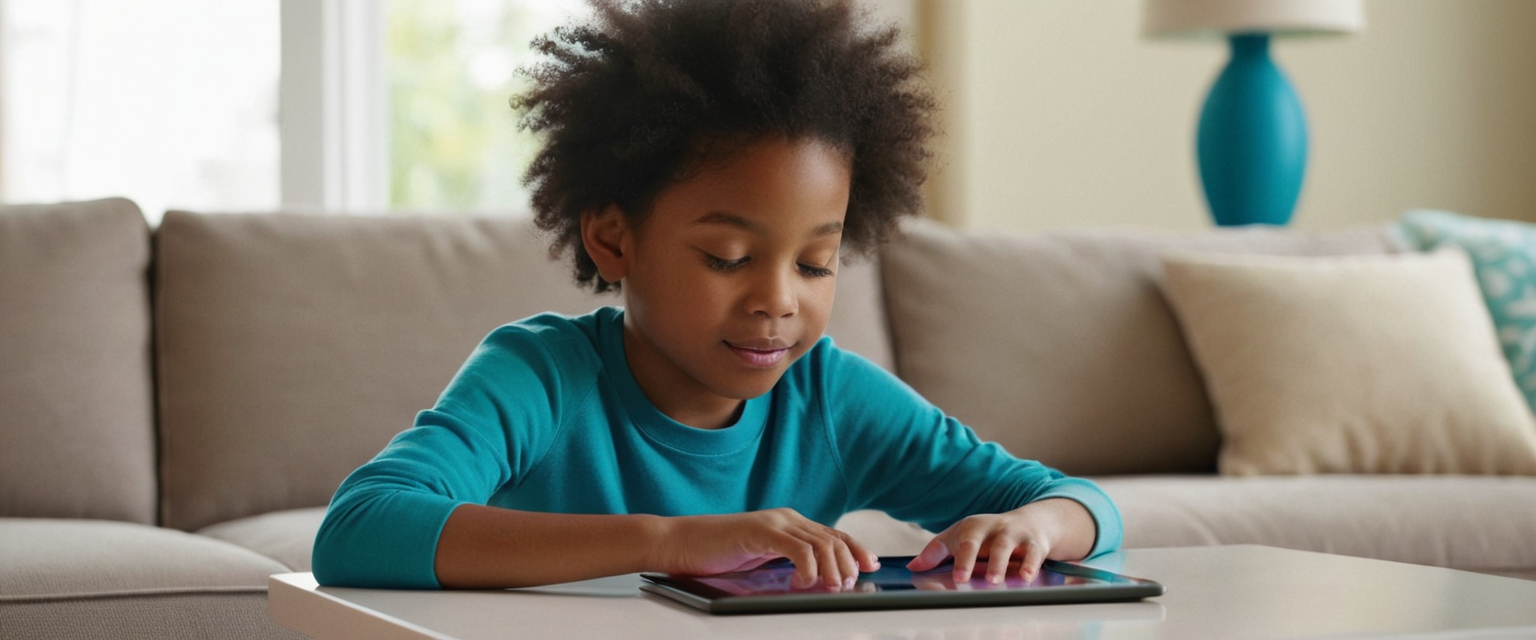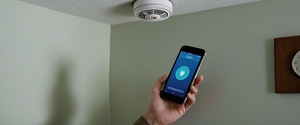
Ensuring Child Safety in the Digital Age: The Imperative of Disabling Cameras by Default on Kids’ Tablets
The pervasive integration of cameras in children’s tablets presents substantial privacy and security vulnerabilities that demand systematic mitigation through default-disable configurations. This comprehensive analysis synthesizes technical frameworks, regulatory landscapes, and threat assessments to establish that camera deactivation by default is a critical safeguard against unauthorized surveillance, data exploitation, and predator access. Research across Amazon Fire Kids Edition, Samsung Kids tablets, and Apple iPads reveals inconsistent implementation of camera-disabling protocols despite available parental controls, creating exploitable gaps in child protection systems. Physical webcam covers and granular software restrictions provide effective countermeasures, yet manufacturer-level defaults remain essential for comprehensive security. Regulatory frameworks like COPPA and GDPR-K increasingly mandate privacy-by-design principles, compelling device manufacturers to prioritize hardware and software configurations that minimize data collection vectors. Industry-wide adoption of camera-disabling defaults, coupled with enhanced parental education and security protocols, emerges as the optimal strategy to protect young users in an era of escalating digital threats.
The Evolving Landscape of Children’s Digital Engagement
Children’s interaction with tablet technology has undergone exponential growth, with studies indicating 56% of children aged 8–12 own personal devices while 88% of teens have regular access to smartphones or tablets. This technological immersion occurs during critical developmental stages where risk awareness remains underdeveloped, creating vulnerabilities that malicious actors systematically exploit. The Amazon Fire Kids Edition exemplifies specialized hardware targeting ages 3–7, featuring ruggedized cases and curated content, yet persistent vulnerabilities exist in its camera implementation despite built-in parental controls. Modern tablets function as multifunctional portals combining educational applications, internet browsers, and multimedia recording capabilities, thereby converting cameras from optional features into persistent surveillance vectors when improperly secured.
Demographic analyses reveal concerning usage patterns where approximately 15% of children with personal devices average ≥4 hours of daily screen time, often with minimal supervision. This extensive exposure amplifies attack surfaces for threats ranging from malware-infected applications exploiting camera permissions to social engineering tactics manipulating children into enabling video functions. The tablet ecosystem further complicates security protocols through integrated cloud services that automatically sync visual content, creating permanent digital footprints of children’s activities that extend beyond device-level controls. This technological trajectory underscores the necessity of reengineering device architectures to prioritize child safety through hardware configurations that default to minimal data collection principles.

Documented Threats and Privacy Vulnerabilities
Camera-enabled tablets introduce multifaceted risks extending beyond incidental data collection to targeted exploitation by malicious entities. Forensic analyses of compromised devices reveal that predators utilize three primary attack vectors: malware injection through malicious applications granting remote camera access, Bluetooth protocol vulnerabilities in internet-connected toys repurposed as spy equipment, and social engineering tactics coercing children into enabling video functions. The FBI has explicitly warned that connected toys with cameras and microphones create exploitation risks through unauthorized location tracking and private conversation recording. Case studies of products like Fisher-Price’s SmartToy Bear demonstrated critical security flaws where stored voice recordings and account information became accessible through unsecured databases, leading to leaks of over two million personal recordings.
Child sexual abuse imagery represents the most severe consequence of unsecured camera systems, with 78% of annually cataloged abuse materials depicting children under age 12. Unlike conventional child exploitation, digitally recorded abuse creates permanent visual records that perpetuate victimization through indefinite circulation, with studies indicating 43% of such materials originate from familial perpetrators using personal devices. Neuropsychological research documents profound trauma effects among victims, including heightened anxiety, complex PTSD symptoms, and social withdrawal linked to perpetual distribution of abuse imagery. Parallel risks emerge in educational contexts where synchronous learning platforms often mandate camera access, creating surveillance environments that disproportionately affect marginalized student populations already subjected to historical surveillance patterns.
Commercial data exploitation compounds these dangers, as evidenced by Amazon’s $25 million FTC settlement for illegally retaining children’s voice recordings and geolocation data despite parental deletion requests. This violation demonstrates systemic corporate disregard for child privacy, where default-enabled sensors become instrumentalities of covert data harvesting. Hardware vulnerabilities further enable exploitation, as demonstrated by the “video deficit effect” where infants and toddlers demonstrate impaired ability to distinguish between screen-based interactions and real-world applications, increasing susceptibility to manipulative content.
Technical Implementation Frameworks
Disabling camera functionality requires multilayered approaches spanning hardware modifications, operating system configurations, and application-level restrictions. Manufacturer-specific protocols reveal significant variation in implementation efficacy:
Amazon Fire Tablets: For child profiles, camera deactivation requires navigating to Settings → Child Profile → Camera Settings → Toggle “Enable Camera & Photo Gallery” to off. Adult profiles necessitate Parental Controls → Device Features → Camera → Block Access. Persistent camera malfunctions despite correct settings may require: (1) Force-stopping the camera application via Settings → Applications → Manage All Applications; (2) Clearing camera cache/data; (3) Executing hardware reset by holding power for 40 seconds. The platform’s architectural limitation emerges in partitioned functionality where deactivating main camera access doesn’t override individual app permissions, requiring manual revocation per application.
Protect Your Digital Life with Activate Security
Get 14 powerful security tools in one comprehensive suite. VPN, antivirus, password manager, dark web monitoring, and more.
Get Protected NowiOS Ecosystem: Apple’s Screen Time architecture enables comprehensive camera management through Content & Privacy Restrictions → Allowed Apps → Camera toggle. However, this system-level disablement doesn’t prevent third-party applications from requesting camera access, necessitating supplemental app-specific permission revocation under Privacy settings. Advanced configurations permit feature-specific restrictions (e.g., disabling FaceTime while allowing photo capture), though these require meticulous manual configuration.
Android Implementations: Google Family Link provides centralized camera control through Parental Controls → Device Settings → Camera Access → Block. Manufacturer-specific implementations like Samsung Kids feature auxiliary camera management through Profile Settings → Permissions → Camera toggle. The platform’s fragmentation creates vulnerability where OS-level restrictions don’t universally override manufacturer skins, requiring device-specific validation.
Technical countermeasures augment software controls, including physical webcam covers that provide hardware-level obstruction. Research indicates that sliding-bar designs offer optimal security without residue concerns compared to adhesive solutions, with magnetic variants demonstrating 100% effectiveness against remote activation. Enterprise-grade solutions like CubiLock MDM enable organizational enforcement of camera-disable policies across Android fleets through remote configuration profiles. Despite these technical solutions, persistent gaps remain where default-enabled cameras necessitate post-purchase intervention rather than secure-by-design architecture.

Legislative Frameworks and Regulatory Compliance
Children’s digital privacy operates within an evolving regulatory landscape where legislative instruments increasingly mandate privacy-by-default implementations. The Children’s Online Privacy Protection Act (COPPA) establishes foundational requirements by classifying voice and image recordings as protected personal information, necessitating verifiable parental consent before collection. The Federal Trade Commission’s enforcement actions have clarified that COPPA’s scope extends to connected toys with recording capabilities, evidenced by penalties against companies retaining children’s voice data without authorization. The 2023 FTC settlement with Amazon underscores regulatory vigilance, where illegal retention of children’s geolocation data and voice recordings resulted in a $25 million penalty.
European frameworks advance stricter requirements through GDPR-K provisions mandating data minimization by design, requiring that children’s devices collect only essential data through default configurations. The UK’s Age-Appropriate Design Code further specifies that high-risk features like cameras must be “off by default” unless core functionality justification exists. These extraterritorial regulations influence global product development, as demonstrated by Apple’s implementation of on-device processing for Siri requests following GDPR-K compliance requirements.
Emerging state-level legislation signals increasing regulatory rigor, exemplified by Utah’s Social Media Regulation Act requiring explicit parental consent for minor accounts, though its device-level enforcement approach creates technical conflicts with app-specific privacy architectures. The OECD’s Recommendation on Children in Digital Environment articulates guiding principles for privacy-by-default implementations, emphasizing that camera functionality should require “opt-in” activation rather than “opt-out” deactivation. Comprehensive compliance strategies now mandate: (1) Privacy Impact Assessments documenting camera necessity; (2) Data Protection by Default configurations; (3) Parental consent workflows integrated into device initialization.
Best Practices and Implementation Strategies
Effective camera risk mitigation requires stratified interventions across manufacturing standards, parental controls, and user education:
Manufacturer Responsibilities: Industry must implement Privacy by Design and Privacy by Default principles where camera functionality remains disabled until explicit activation during device setup. Hardware modifications should include physical camera covers integrated into device casings, eliminating aftermarket accessory dependencies. Software architectures must enforce permission compartmentalization, preventing applications from inheriting device-level camera authorizations.
Parental Configuration Protocols: After device acquisition, parents should: (1) Establish restricted child profiles before device activation; (2) Navigate to camera settings to disable system and application permissions; (3) Install physical webcam covers as secondary obstruction; (4) Regularly audit application-specific permissions. For shared devices, platform switching between adult/child profiles provides session-specific restrictions, though this requires setting unique authentication credentials per profile.
Educational Frameworks: Guardians must implement ongoing digital literacy development covering: (1) Camera function awareness using analogies like “digital windows”; (2) Recognition of social engineering tactics; (3) Mandatory permission protocols requiring parental consultation before enabling access. Educational institutions should incorporate camera privacy modules into digital citizenship curricula, emphasizing permanent digital footprint consequences.
Enterprise Solutions: Organizational deployments of children’s tablets necessitate Mobile Device Management systems enforcing: (1) Global camera-disable policies; (2) Time-bound permission overrides for educational use; (3) Automated compliance auditing. The CubiLock platform exemplifies this approach through centralized policy administration that remotely disables cameras across Android fleets without physical access.

Ethical Considerations and Societal Implications
The ethical imperative for camera-disabled defaults extends beyond risk mitigation to developmental safeguarding. Cognitive research demonstrates the “video deficit effect” where children under 24 months exhibit significantly impaired ability to transfer screen-based learning to real-world contexts, raising pedagogical concerns about camera-enabled interactions. Adolescent development necessitates controlled autonomy exploration, yet persistent surveillance through educational platforms creates psychological burdens that mirror institutional monitoring.
Equity considerations reveal disproportionate impacts on marginalized communities, where children from BIPOC backgrounds experience heightened trauma from surveillance interfaces due to historical patterns of institutional monitoring. This necessitates anti-bias algorithms in facial detection systems and cultural competency in parental control interfaces. The privacy paradox emerges when safety-focused monitoring conflicts with developmental needs for unstructured exploration, requiring balanced solutions that restrict external access while preserving creative autonomy.
Data monetization models create commercial conflicts of interest, as demonstrated by Amazon’s illegal retention of children’s voice data for algorithmic training. Ethical design must prioritize unmonitored interaction zones where non-recorded activities support cognitive development without corporate surveillance. Legal frameworks increasingly recognize these rights through instruments like the UN’s General Comment 25, which explicitly extends children’s rights to privacy, freedom from exploitation, and development to digital environments.
Securing Childhood, By Default
The convergence of technical capabilities, regulatory frameworks, and documented threats establishes an unequivocal case for disabling cameras by default on children’s tablets. This analysis demonstrates that current manufacturer implementations fail to provide adequate out-of-box protection despite available technical solutions and legal requirements. The Amazon Fire Kids Edition’s optional camera disablement exemplifies the industry-wide pattern where safety features require parental expertise to activate rather than secure defaults. Progressive regulatory developments like the UK’s Age-Appropriate Design Code and the OECD’s recommendations signal the inevitable transition toward regulated privacy-by-default standards.
Effective implementation requires tripartite cooperation: Manufacturers must reconfigure device initialization workflows to require explicit camera activation during setup while integrating physical obstruction mechanisms into hardware designs. Parents should implement stratified software controls across profiles and applications, complemented by physical webcam covers and ongoing digital literacy education. Regulatory bodies must accelerate enforcement actions against non-compliant manufacturers while funding independent security audits of children’s devices.
Future research should quantify longitudinal security outcomes of camera-disable defaults across diverse socioeconomic groups while developing machine learning systems that balance monitoring needs with privacy preservation. The immediate priority remains industry-wide adoption of camera-disabled defaults as foundational to child protection in increasingly surveillant digital ecosystems.






